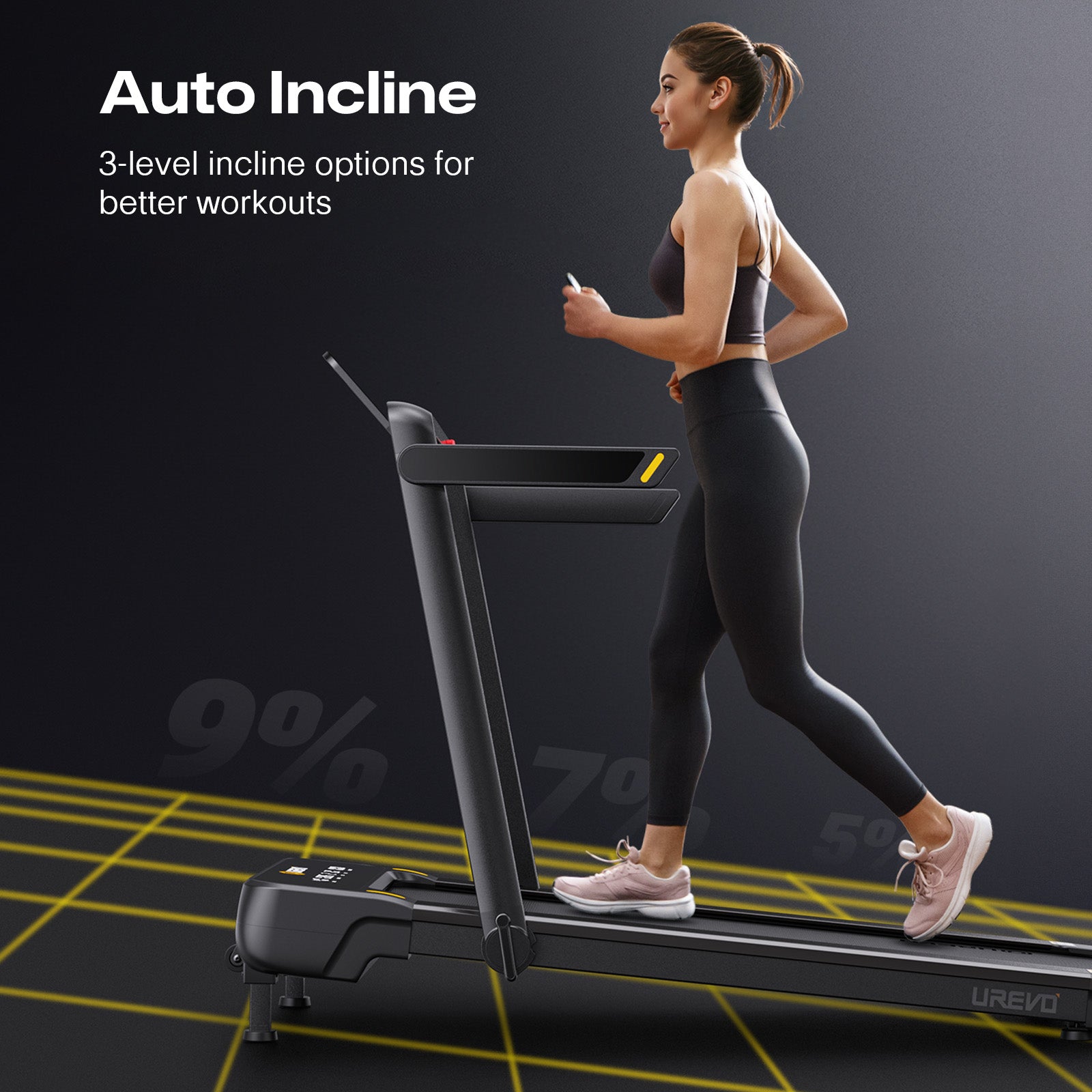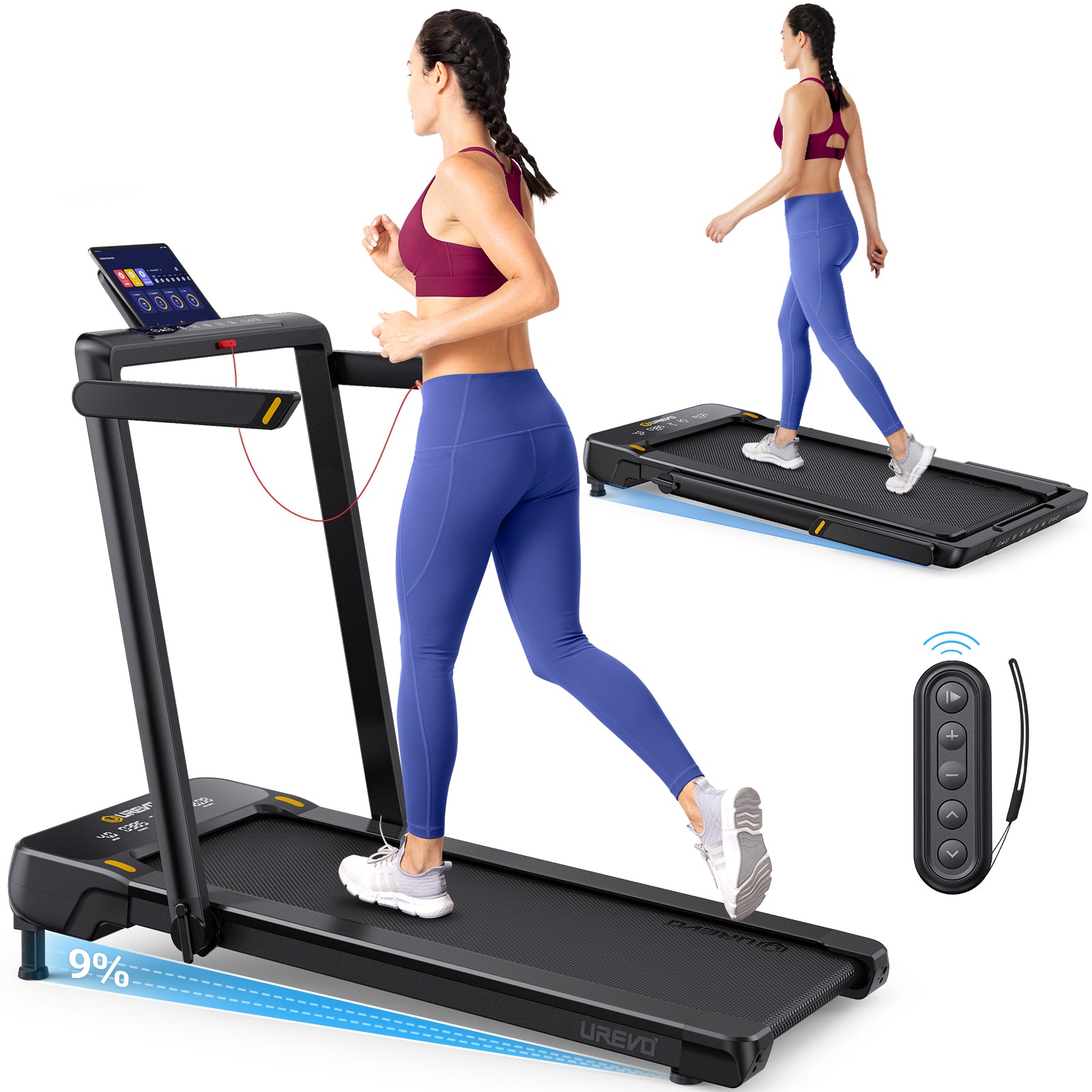Treadmills are one of the most popular exercise machines found in gyms and homes. They are easy to use and can simulate walking, jogging, or running indoors. Improper use of treadmills, however, can lead to accidents and injuries. So, we need to exercise safety precautions when using a treadmill-that’s what we are gonna talk about today.
A Glimpse Into Treadmill Safety
Treadmills come with a range of functions, such as adjustable speed, incline options, and emergency stop mechanisms. Knowing how to operate these controls can help prevent accidents. Additionally, you should always be aware of your own fitness level and health conditions to avoid over-exerting yourself. Proper preparation and understanding of your body and the equipment can reduce potential risks significantly.
Choose the Right Space
The treadmill should be placed in an area with ample space around it. This will allow free movement and reduce the risk of bumping into objects or walls. Avoid cramped spaces or placing the treadmill too close to furniture. Maintaining a clear area around the treadmill also provides a safer landing space in case you fall off. Furthermore, keep pets and children away while using the treadmill to avoid distractions and potential accidents.

Check for Stability
Before every use, check whether the treadmill is positioned on a flat, stable surface. Any wobbling or uneven ground can cause the machine to shift during operation, increasing the risk of injury. It is important to confirm that the treadmill is securely placed and that all parts are tightly fastened. This will help prevent any sudden malfunctions while the machine is in use.
Wear Appropriate Gear
Proper attire is crucial for treadmill safety. The wrong clothing or shoes can contribute to accidents, so make sure to choose the right gear for your workout. Always wear shoes that are specifically designed for running or walking when using a treadmill. These shoes provide adequate cushioning, grip, and support to help maintain balance during exercise. Running shoes are engineered to reduce the impact on joints and provide a stable base, which minimizes the chance of tripping or slipping.
Wear clothing that is comfortable and form-fitting but not too tight. Loose-fitting garments can get caught in the treadmill's belt or other moving parts, causing potential injury. Avoid wearing accessories like scarves, long jewelry, or baggy pants. Focus on athletic wear that allows free movement while staying close to the body.
Understand the Controls
Most treadmills feature buttons or touch screens for adjusting speed, incline, and workout modes. Familiarizing yourself with these controls before starting your exercise is important for safe usage. Spend time learning how to adjust the treadmill gradually to prevent any sudden changes in speed or incline that could throw you off balance.
The emergency stop button or clip is worthy of atteention. The safety feature is designed to stop the treadmill immediately in case of an emergency. Knowing where the stop button is located can make a significant difference in preventing serious accidents.
Warm-Up and Cool Down: Why They Matter
Doing a proper warm-up and stretching routine is necessary before your treadmill workout. For stretching loosens the muscles and joints, increases flexibility, and gets your body ready for the physical activity ahead. Taking five to ten minutes to perform light stretches and a slow walk on the treadmill helps gradually elevate your heart rate and reduce the risk of muscle strain.
After finishing a workout, cooling down is just as important as warming up. A proper cool-down helps to gradually lower your heart rate and return your body to its resting state. Walk at a slow pace for a few minutes to allow your breathing to normalize and prevent dizziness. Stretching after your workout can also reduce muscle stiffness and improve recovery time.
Use the Treadmill Correctly
Many injuries occur when people rush into using the treadmill without proper technique. When beginning a treadmill workout, start at a slow speed. Walking for a few minutes allows your body to adapt to the movement of the treadmill before increasing speed or incline. Jumping straight into a fast pace increases the risk of losing balance or misstepping, which could lead to falls. Gradually increase your speed to a comfortable jogging or running pace once you have fully warmed up.
Proper form on the treadmill can avoid injury. Keep your posture upright with your head facing forward, shoulders relaxed, and your arms swinging naturally at your sides. Avoid leaning forward or holding onto the side rails, as this can throw off your balance and strain your muscles. Always look straight ahead to maintain good posture and prevent neck strain. Running with proper form helps reduce the impact on your joints and improves the effectiveness of your workout.

Deal with Emergencies on the Treadmill
Even with all the necessary precautions, emergencies can still occur on the treadmill. If you need to stop the treadmill abruptly, use the emergency stop button to clip to halt the machine instantly. If you feel lightheaded, experience pain, or notice any mechanical issues with the treadmill, use the emergency stop immediately.
What to Do in Case of a Fall or Injury
Falling on a treadmill can happen if you lose balance, trip, or overexert yourself. If you fall, try to roll off the side of the treadmill, away from the moving belt, to avoid further injury. Once you are off the machine, sit for a moment and assess any injuries. If you are seriously hurt, seek medical attention immediately. Even if the fall seems minor, it is wise to stop your workout and check for any lingering effects, such as dizziness or joint pain, before continuing exercise at a later time.
Stay Safe, Stay Fit!
Using a treadmill can be an excellent way to improve cardiovascular health and maintain fitness, but safety should always be a top priority. With the right precautions, you can reap the benefits of treadmill exercise while minimizing risks.
FAQs
How often should I clean my treadmill?
It's a good idea to wipe down the treadmill after every use, especially the handles and the display screen where sweat and dirt can accumulate. For deeper cleaning, like vacuuming around the motor area, once a month is recommended.
Can I use a treadmill if I have joint pain?
If you have joint pain, especially in the knees or hips, it's important to consult a doctor before using a treadmill. Walking on a treadmill with no incline may be gentler on your joints, but it's always best to get medical advice to prevent worsening any existing conditions.
How long should a treadmill workout be for beginners?
For beginners, starting with a 20-30 minute workout is ideal. Gradually increase the duration and intensity as your fitness level improves. It’s more important to maintain consistency than to overexert yourself early on.
Can I run barefoot on the treadmill?
Running barefoot on a treadmill is not recommended due to the risk of injury. The treadmill’s moving belt generates heat and friction, which could cause blisters or burns on your feet. It's better to wear well-cushioned running shoes for proper support and protection.
What are some signs that my treadmill needs maintenance?
Unusual noises like squeaking, a slipping belt, or the machine not operating smoothly could all be signs that your treadmill requires maintenance. Regular lubrication of the belt and motor checks can help prevent these issues.
Is it safe to use a treadmill after eating?
It’s generally better to wait at least 30 minutes after a meal before using a treadmill. Exercising too soon after eating can cause discomfort, nausea, or cramping. A small snack like a banana or a handful of nuts is okay before a workout, but avoid large meals.
What’s the best speed setting for beginners?
Beginners should start at a speed of around 2.5 to 3.5 mph for walking, and 4 to 5 mph for a light jog. Gradually increase the speed as you become more comfortable and confident on the treadmill.
Can I listen to music or watch TV while on the treadmill?
Yes, many people enjoy listening to music or watching TV to pass the time on the treadmill. However, always stay aware of your surroundings and avoid distractions that might cause you to lose balance or misstep.
What incline setting should I use to simulate outdoor running?
An incline of 1-2% can simulate the effort required for outdoor running, helping to account for wind resistance and natural terrain. You can adjust the incline to vary the intensity and mimic hill running as well.
How can I make treadmill workouts less boring?
Vary your routine by adjusting speed and incline, trying interval training, or setting goals for each session. Listening to upbeat music, podcasts, or watching a show can also help make treadmill workouts more enjoyable and engaging.


























